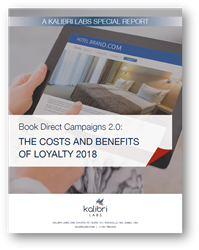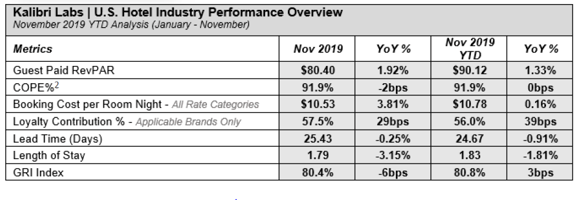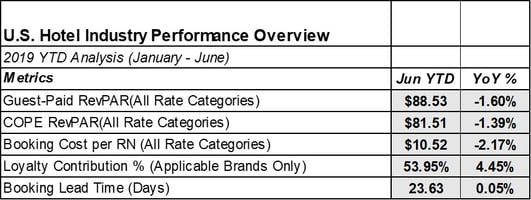January 16th, 2020 – ROCKVILLE, MD "Our November 2019 Market Kalibration report showcases several...
Press
Kalibri Labs' Study Finds Continued Growth of Brand.com on the Heels of Book Direct Campaigns
Strong Loyalty Adoption Provides Key Benefits to Members and Hotels’ Bottom Line
ROCKVILLE, MD. (PRWEB) JANUARY 24, 2019
image-block-outer-wrapper
layout-caption-below
design-layout-inline
combination-animation-none
individual-animation-none
individual-text-animation-none
"
data-test="image-block-inline-outer-wrapper"
>
sqs-block-image-figure
intrinsic
"
style="max-width:199px;"
>
class="image-block-wrapper"
data-animation-role="image"
>
>

Updated Study on Hotel Book Direct Campaigns Reveals Continued Growth of Brand.com
A new, updated Kalibri Labs Special Report, Book Direct Campaigns 2.0: The Costs and Benefits of Loyalty 2018, provides conclusive evidence that the loyalty member campaigns first launched almost three years ago, have either strengthened or stabilized the growth through Brand.com while the OTA channel has either held steady or decelerated. While both channels continue to grow, Brand.com has consistently generated 50% more bookings on average to U.S. hotels than the OTA channel.
The first research on the subject was released in Fall 2017 which examined the period of May-December 2016, immediately after the initial launch of the loyalty member campaigns by close to ten of the major hotel chains. Book Direct Campaigns 2.0: The Costs and Benefits of Loyalty 2018 provides a groundbreaking follow up with new data to uncover how trends have evolved in the time since the last analysis.
“These results are positive news for hotels as more reservations flow through online channels,” said Cindy Estis Green, Kalibri Labs CEO & Co-founder, who authored the report and led the analysis. “We felt it was important to follow up on our last study to assess whether the initial results were a ‘flash in the pan’ and if discounts and other costs offset net revenue gains through the increase in Brand.com bookings. The real question is whether the loyalty programs can move the needle and this study provides some great insights on that issue.”
The newly released study examines 80 million transactions from 19,000 hotels, all of which had loyalty programs in play in the market over the past three years. The updated data and analysis presented in Book Direct Campaigns 2.0 accounts for the variables of discounts and paid search fees that some had suggested would diminish the benefit gained through the Brand.com channel. With these factors taken into account, the loyalty member rates still delivered a 9% premium on ADR net of booking costs.
Details of the four primary takeaways from Book Direct Campaigns 2.0 include:
1. Loyalty members represent the largest customer base for branded hotels in the U.S.
The loyalty base for the hotel industry chains experienced rapid growth of 30-40% year-over-year from 2015 to 2016 when the Book Direct programs were first introduced; the pace has stabilized but continued at a healthy rate into 2018 that is still 2-5X the rate of growth from the pre-Book Direct period (before 2016).
2. Brand.com has grown at the same rate or faster than the OTA channel
When compared to the contribution to occupancy from the OTA channel, the Brand.com channel has maintained its growth running approximately 50% greater than the OTA bookings. The initial campaigns showed a rapid acceleration in 2016 and for the last two years, that pace has stabilized and maintained a steady gap to OTA growth.
3. Net ADR for Brand.com loyalty bookings remain higher than Net ADR for OTA bookings
The ADR for Member Rate/Loyalty bookings still reflects a solid premium compared to OTA bookings after acquisition costs are removed and has grown to 9% in 2018, up from 8.6% in 2016. Even when tested for weekend/weekday and lead time differences, Net ADR for Brand.com loyalty bookings are higher in total, and for each chain scale.
4. Loyalty members yield better results for hotels and a better guest experience
The loyalty base of business in a hotel serves as a foundation of business to which a hotel can supplement with groups, locally sourced and other ad hoc demand drivers to reach its targeted occupancy. When calculating the benefit of a recurring guest coming three times after an initial visit and comparing that to cycling through 4 different OTA customers, the average net benefit to a hotel is approximately $65 per loyalty member (using industry averages). This economic advantage, in combination with enabling more personalized service, gives the hotels with a large recurring loyalty base an advantage over a third-party base and can contribute to a more tailored guest experience.
To review the full report in its entirety, please visit kalibrilabs.com/bookdirect
ABOUT KALIBRI LABS
Kalibri Labs evaluates and predicts revenue performance using its proprietary algorithm to generate the Optimal Business Mix for individual hotels, revealing the most promising opportunities to pursue along with specific direction on how to find and convert them. The Hummingbird PXM revenue strategy and benchmarking platform also includes the industry’s most robust profiles for travel agent and OTA production. The Kalibri Labs database, updated monthly, is comprised of ADR, room revenue, room nights and acquisition costs from over 7 billion guest stays adding 100 million each month from over 33,000 hotels dating back more than 5 years to give an expansive view of the U.S. hotel industry. Real estate developers, brokers and others involved in hotel transactions use Kalibri Labs data to improve underwriting with a more granular view of each market and benchmarks and trendlines for both individual hotels and sub-markets for all U.S. metro areas.
For more information, please visit KalibriLabs.com
MEDIA CONTACT:
Ken Barna
ken@kalibrilabs.com
301-799-2609




